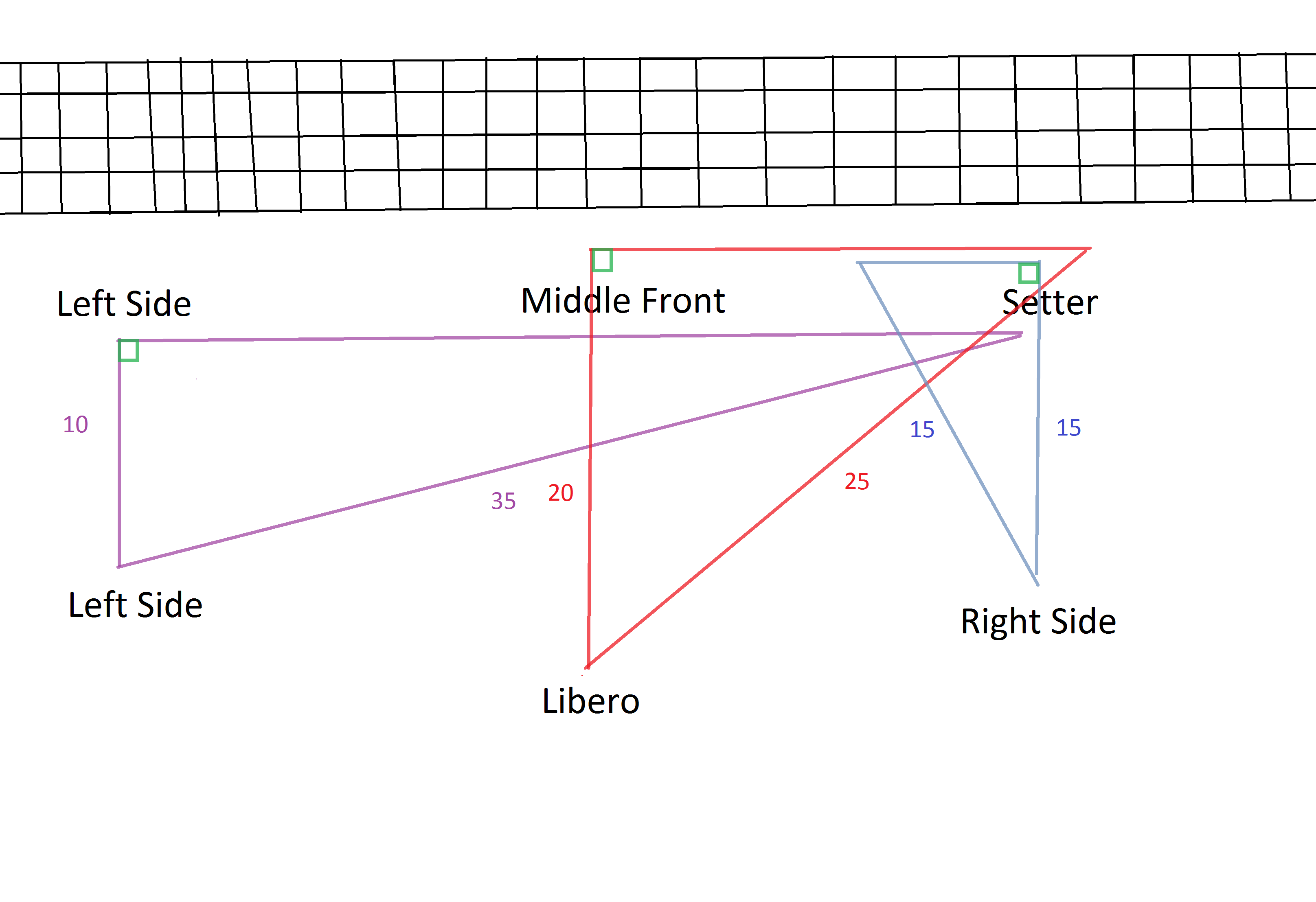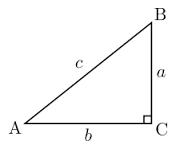Introduction
The current volleyball headcoach is in your need of your help. She wants to help the setter practice accuracy. In order to do this, she wants to be able to tell the setting about how far she needs to set he ball for each of the positions. Here are a few examples of the options the setter has. The setter can get the ball from the right side, libero and left side. Can you give the volleyball coach some tips on how to find the distance the setter needs to set the ball for each positions.
In this Webquest, we will learn about how to do this by using the pythagorean theorem and we will understand the importance that pytagorean theorem has in our world. We will go over anything that may be confusing or difficult to understand.

.
.
.
.
.
.
.
.
.
.
If the left side in the back row passes the ball 35 feet to the setter, and the two left sides are 10 feet apart, about how far does the setter need to set the ball the the left side? Similarily, how far does the setter have to set the ball to the middle front if the libero passes it 20 feet away from the setter and the middle front and the setter are 25 feet from each other? Lastly, how far must the setter set the ball to the middle front for it to be a short set if the right side passes it 15 feet to the setter and the right side and short set to middle front is 15 feet away?
These are the three common sets that the coach wants the setter to learn. Can you help?
Task
This lesson focuses on using the Pythagorean Theorem. In this webauest, we will be talking about when you use Pythagorean Theorem and when you do not use Pythagorean Theorem. After this lesson students should be able to do various things.
Students should be able to
1) Identify Right Triangles
- knowing the characteristics of a right triangle
2) Understand when to use the Pythagorean Theorem
- understanding why it works that way
3) Apply the Pythagorean Theorem
- This includes knowing which side is trying to be found
The problem in the introduction focuses on only finding one leg of a right triangle. However, students should be able to pick up and understand how to find every side of a right triangle using the Pythagorean Theorem.
Process
The Pythagorean Theorem is a quite simple theorem to apply. However, it is important to understand when to use it and how to use it. The Pythagorean Theorem is used to find the legs or the hypotenuse of a right triangle.
The first thing you need to do is check if the triangle you are looking at is a right traingle. In order to tell if it is a right triangle, you need to check if one of the angles in the triangle is a right angle, meaning it is 90 degrees. If this is true, then we know it is a right triangle. If it is not true, then we know it is not a right triangle.
These ARE NOT examples of right triangles.


.
.
.
.
.
Thes ARE examples of right triangles. Often times, there will be a small box in the corner of a triangle. This 'box' represents a right triangle. Any time you see this symbol, it means that is a 90 degree angle. Notice in second picture that the sides of the triangle are labeled as a, b , and c. a and b represend the legs of the triangle, and c represents the long leg. The long leg is known as the hypotenuse. The hypotenuse will ALWAYS be across from the right triangle because c will always be the longest leg. Other than that, it does not matter where a and b are placed.


.
.
.
.
.
To find the sides of the triangle, you use the formula a-squared + b-squared = c squared. Remember that a and b represent the two short legs and c represents the hypotenuse. Plug the known values into the equation and solve for the side you are looking to find. For more guidance and a resource that provides examples, watch this video on this website:
https://www.khanacademy.org/math/geometry/right_triangles_topic/pyth_th…
Evaluation

We are going to go over one of these examples and you can try to figure out the other two. Let's look at the left side back row player passing it to the setter and the setter setting it to the left side front row hitter.
a-squared+b-squared=c-squared
a-squared + (10)(10)= (35)(35)
a-squared + 100= 1225
a-squared= 1125
a=33.541
This means that the setter would need to set the ball 33.541 feet to get it to the right spot.
.
Now try the other problems!
Conclusion
You have helped the setter know how far she needs to set the ball to get a perfect set. You helped her with the three most common sets in volleyball. Are there any other different sets you can suggest to the setter to have a variety of ways to set up the ball?